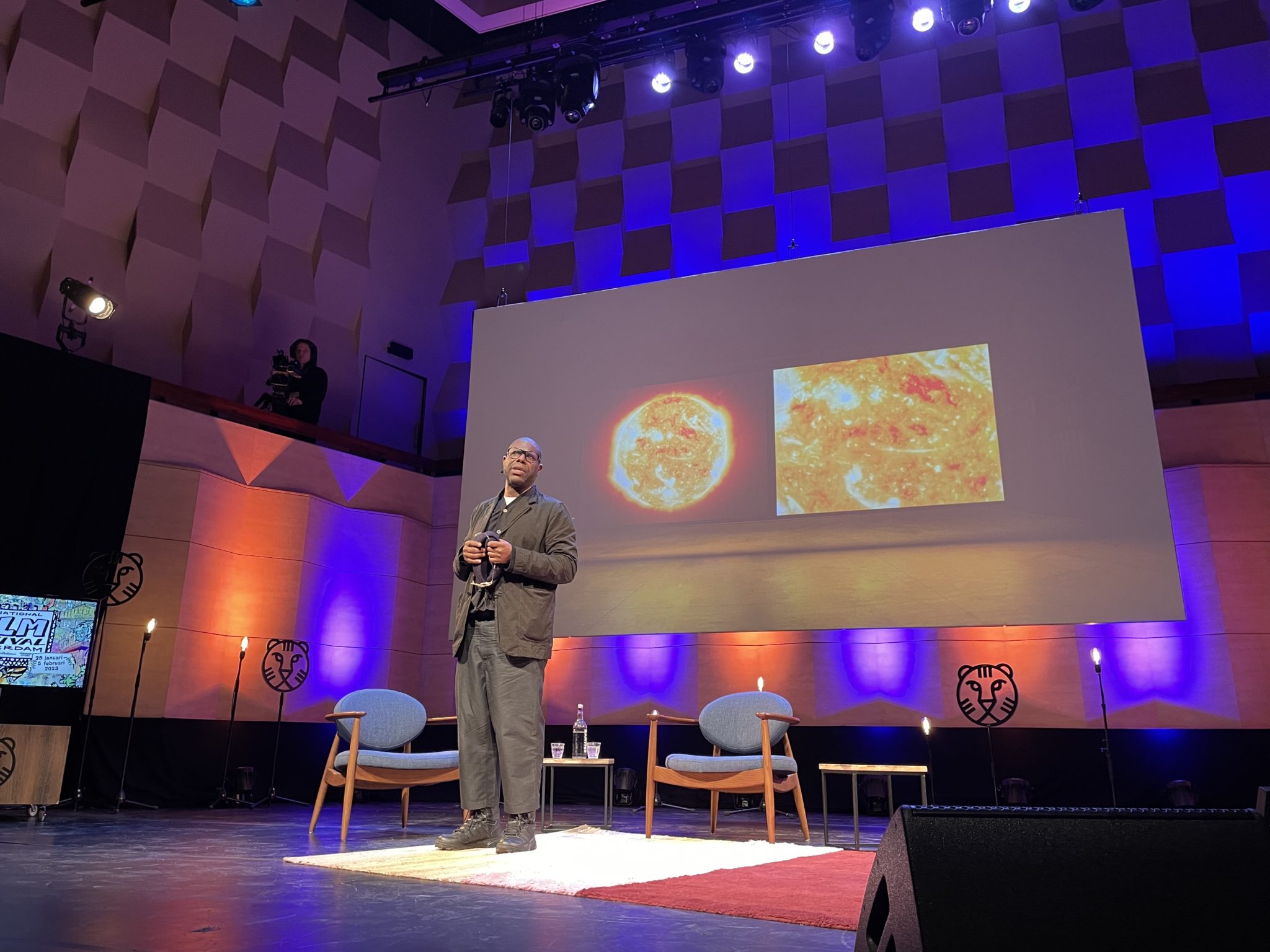Formerly an editor, currently lives and works as a freelance journalist in Paris. Mainly writes about movies, but also about music and a broad range of other cultural topics. Has her own regular columns on the eiga.com website and in the cultural magazine Fu-ra-n-su (France) published by Hakusuisha. Publications include Paris & Cinema(Eiga de aruku Paris)by Space Shower Books.
Steve McQueen giving a talk at International Film Festival Rotterdam (IFFR) 2023. ©Kuriko Sato
A cry for prayer through a father’s story
For Steve McQueen, who won the Academy Award for Best Picture with his third feature film, “12 Years a Slave” (2013), visual expression always carries a personal message. Whether he’s working in popular media such as cinema or with the video installations he has been creating since the 1990s, the fundamental principles of McQueen’s work remain the same. How to elevate things derived from personal experience into universal art is what matters most to him.
But perhaps never before has he projected a personal experience as candidly than in this new artwork.
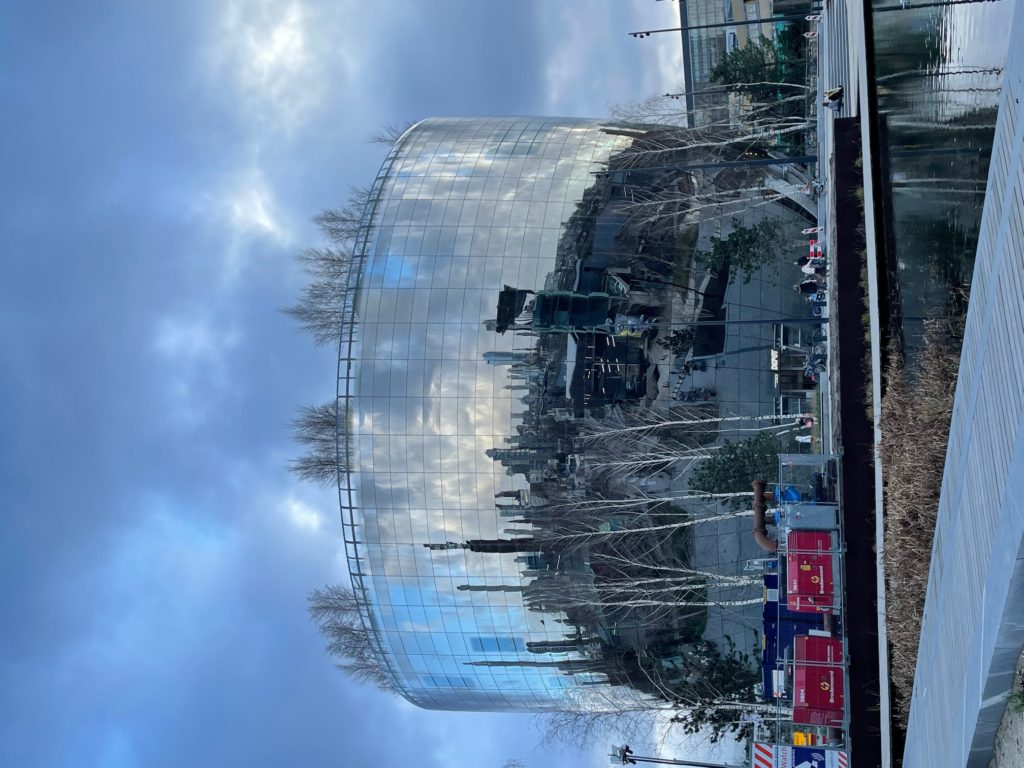
Depot Boijmans Van Beuningen ©Kuriko Sato
McQueen’s first new installation in three years, the video project “Sunshine State” was commissioned by the International Film Festival Rotterdam and presented in the Depot Boijmans Van Beuningen. Featuring a spectacular glass exterior, the Depot was opened in November 2021 and is located next to the Museum Boijmans. The building is unique in that while it houses the museum’s collection, it is also open to the public and offers visitors a look at the process of restoring artworks. McQueen’s installation was shown in a bare concrete space used for the first time for this exhibition.
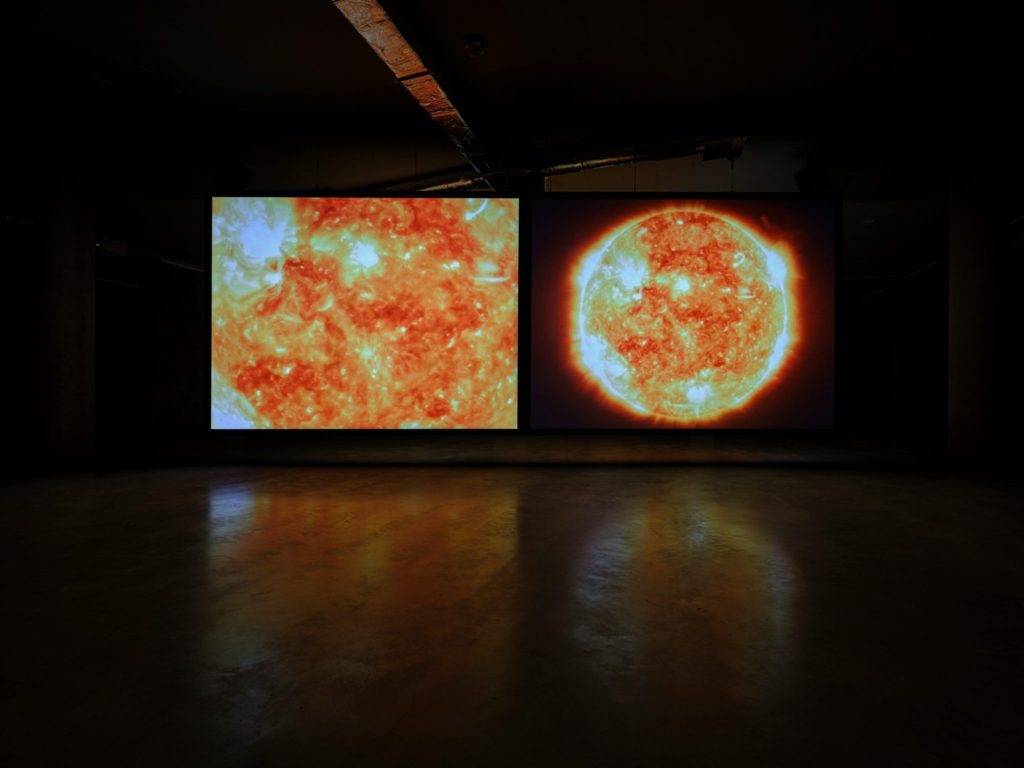
©︎ Steve McQueen. Courtesy the artist, Thomas Dane Gallery and Marian Goodman Gallery. A Commission for International Film Festival Rotterdam 2022. Photo: ©️Studio Hans Wilschut
A large screen installed in the center of the room is split into two parts, with slightly different but synchronized footage juxtaposed on its left and right sides. The images are divided into two materials, one showing video borrowed from NASA of a magma-like blazing sun, the other a modified excerpt from Alan Crosland’s 1927 film “The Jazz Singer,” which McQueen had wanted to use for 20 years. As the two appear repeatedly and alternately, McQueen’s voice-over narration takes over. The story he tells is an actual experience of his father’s.
Here is a rough summary of what McQueen’s father told his son just before he died.
“When my dad was working on a farm in Florida in the fifties, he went to a local bar with some colleagues. They were told, ‘We don’t serve niggers,’ and one of my dad’s co-workers smashed a glass. They ran out of the bar, but their pursuers shot at them. My dad had a brush with death, having to hide in a ditch until the next morning. He never saw his colleagues again. Why did he tell me this story now? Why did he wait until he was on his deathbed?”
McQueen continues, repeating the phrases like an incantation. “As he told me the story, he said. He said. Hold me tight. Hold me tight.”
The words grow in intensity with each repetition, echoing in the mind and overlapping with the other narrative being told—that of “The Jazz Singer,” which is also a father-and-son story.
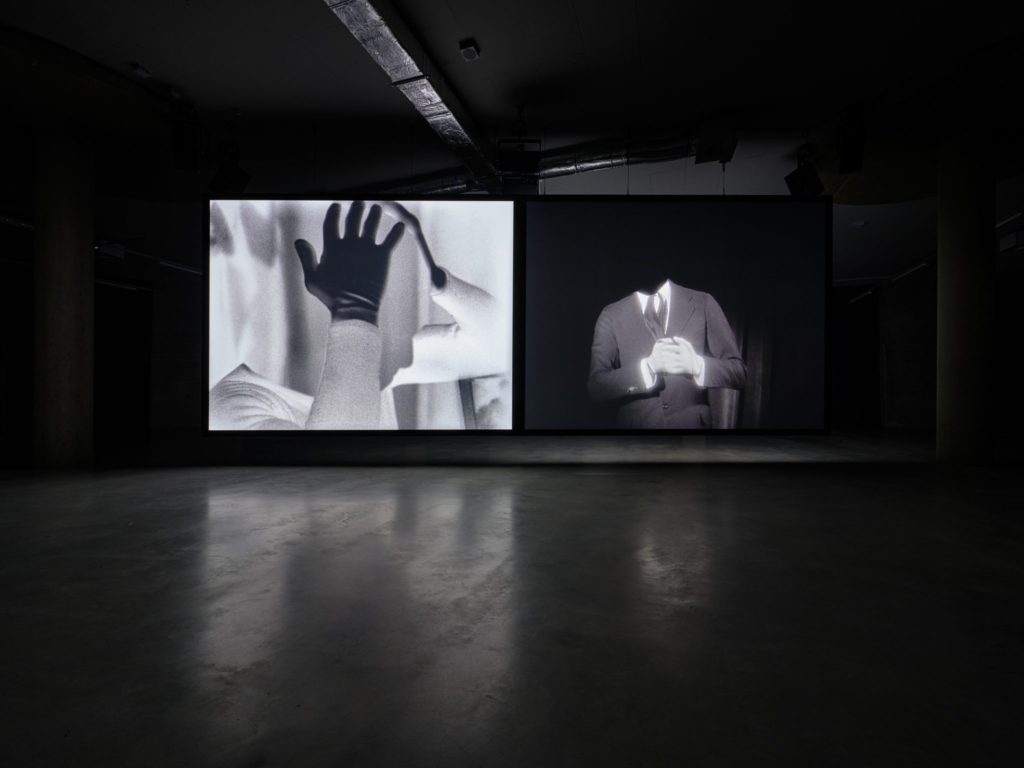
©︎ Steve McQueen. Courtesy the artist, Thomas Dane Gallery and Marian Goodman Gallery. A Commission for International Film Festival Rotterdam 2022. Footage from The Jazz Singer courtesy Warner Bros. Picture Photo: ©️Studio Hans Wilschut
The movie’s Jewish protagonist, played by Al Jolson, dreams of becoming a jazz singer, but his father wants him to carry on the family tradition and become a cantor at the synagogue. A conflict between father and son, followed by an embrace. At this moment, two different worlds intersect: the Jewish and (through the narration) the Black communities.
McQueen further inverts, rewinds, and replays the film, establishing an alienating effect.
Most symbolic is the scene in which Jolson applies his makeup. As he paints his face black with greasepaint, the sequence plays on both the left and right screens, one showing a positive image, the other a negative, so that the black and white faces appear side by side. The act of applying the paint is looped over and over, with the face repeatedly turning black, then white again. At times, Jolson’s head disappears, blending into the black background, as if he were invisible. By erasing the protagonist’s identity, the footage shakes the beliefs embedded deep in the viewer’s psyche.
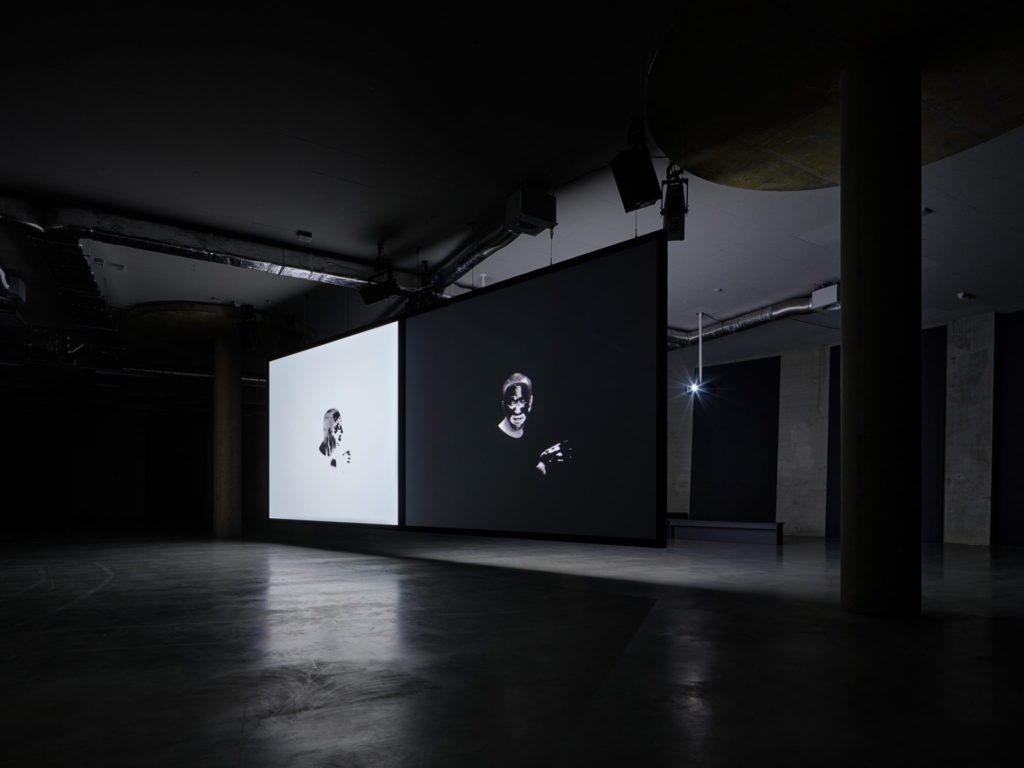
©︎ Steve McQueen. Courtesy the artist, Thomas Dane Gallery and Marian Goodman Gallery. A Commission for International Film Festival Rotterdam 2022. Footage from The Jazz Singer courtesy Warner Bros. Picture Photo: ©️Studio Hans Wilschut
This is how McQueen describes his motivations for creating the artwork.
“I don’t think people’s discriminatory attitudes have changed much compared to the past. It’s just that they’re less visible now. Many things in our culture come from traditions that are steeped in discrimination and prejudice. For example, Mickey Mouse was originally inspired by a Black minstrel. Even these now popular characters contain subconscious traces of discriminatory attitudes and caricatures perpetrated by white people. ‘Sunshine State’ is about such white perspectives.”
Jolson’s face is again replaced by the footage of the blazing, burning sun. Perhaps this is a symbol of McQueen’s own anger. As if in prayer, he murmurs, “shine on me, shine on me, shine on me.”
Upon seeing the finished work, McQueen says it had an unanticipated effect on him.
“It was hard to hear my own voice telling the story. But for the first time, I became aware of what I had unwittingly inherited from my father. I realized that it was both painful and gratifying at the same time.”
Prejudices reside in our casual, everyday gaze. By presenting an emotional personal experience, McQueen reminds us of our unconscious guilt.
Translated by Ilmari Saarinen
INFORMATION
Steve McQueen "Sunshine State"
Presented: The International Film Festival Rotterdam (IFFR) 2023
Date: January 26 to February 12, 2023
Venue: Depot Boijmans Van Beuningen, Rotterdam, the Netherlands


